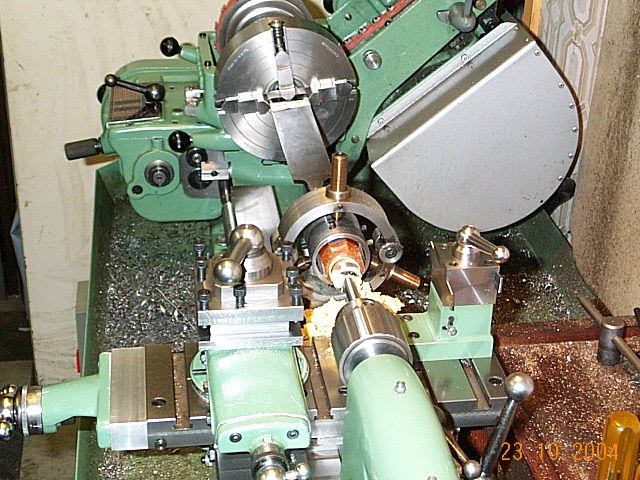This was an article I appreciated seeing, that showed a simple nut and spring used to virtually remove the backlash from a Myford Super 7 cross slide screw and handle. The extra, bronze, nut engaged in the Myford alloy nut with an Oldham (key and slot) coupling and a spring and tube ran over the feedscrew to apply pressure to the bronze nut. This pressure means that (all) free play is removed and only the play in the Oldham coupling can be felt at the handle.
I liked the idea and thought about it. But how firm should the spring pressure be? I then realised that when you rotate the handle anti-clockwise and withdraw the cross slide it is just the pressure of the spring that acts on the bronze nut and thread to move the slide.
Thus, if you applied pressure on a tool for an internal boring cut then one (initially) only had the pressure that the spring could apply. Is this a bad thing? How much pressure does a tool need to cut, and if this is applied by a spring might the tool 'bounce' as it applies a cut?
Clearly, the best idea is to have a split nut with some form of mechanical adjustment to remove the free play. But then this has to be adjusted for the non-worn portion of feedscrew.
I apologise to Mr Warren Jacobs, who wrote the article, if this appears critical as I do appreciate his contribution, and I agree that it must be an improvement. But what do others think of a spring loaded nut as opposed to a mechanically split nut, assuming it would even be possible to design one for a Myford cross slide?
Norm.
Chris Trice.






